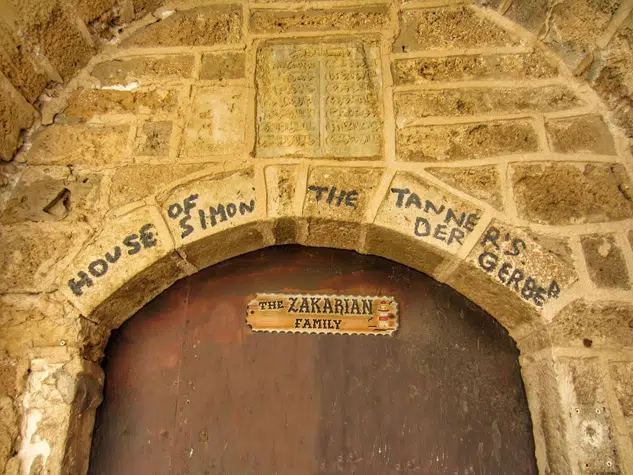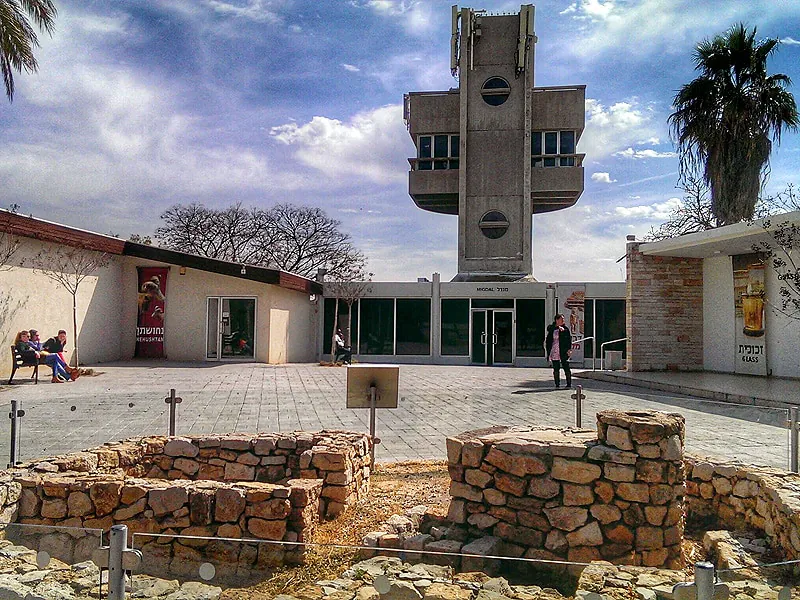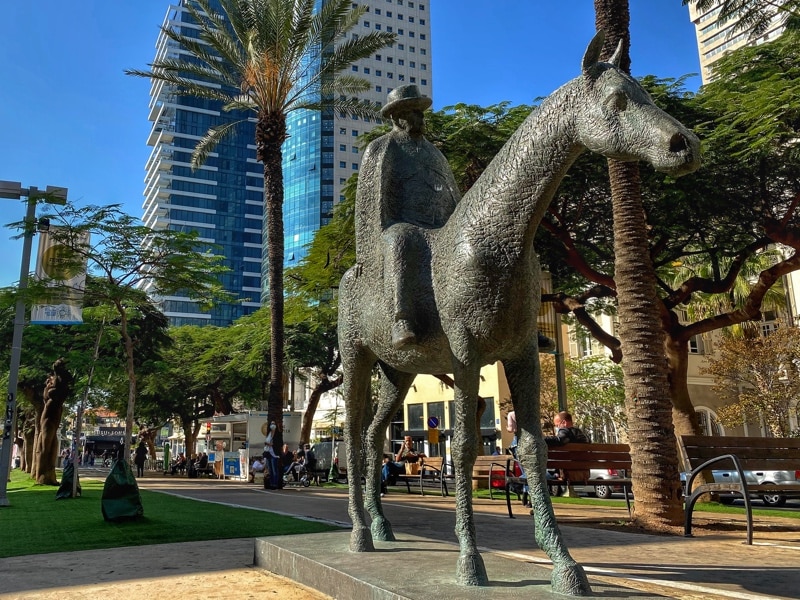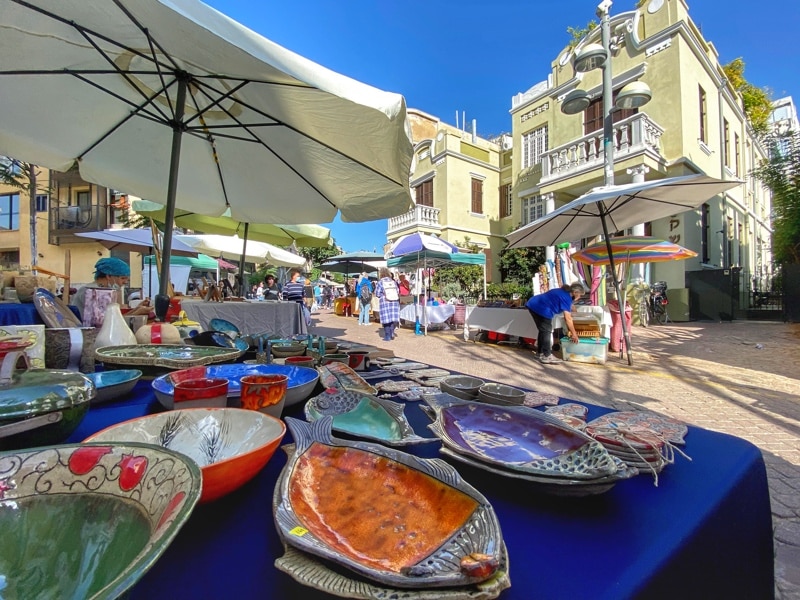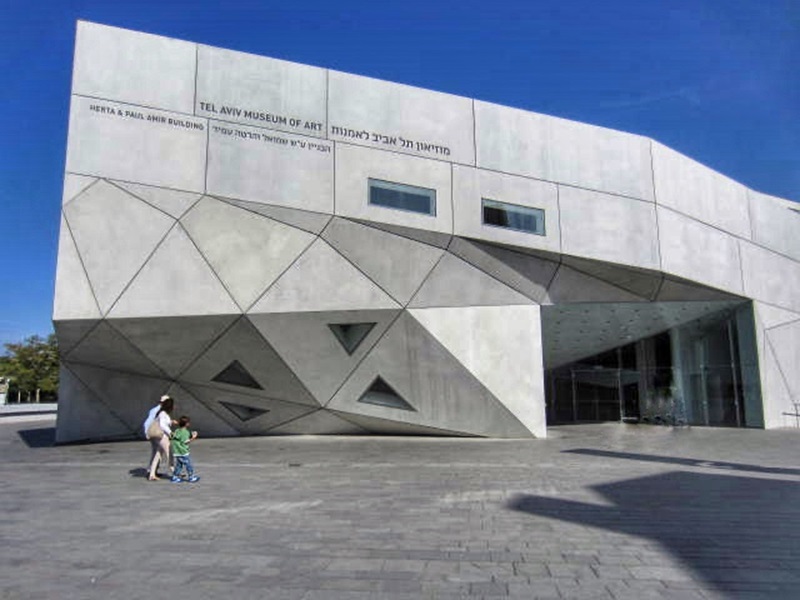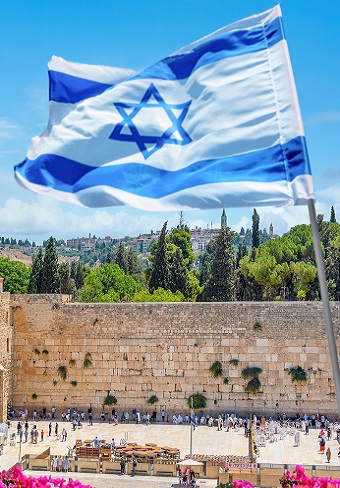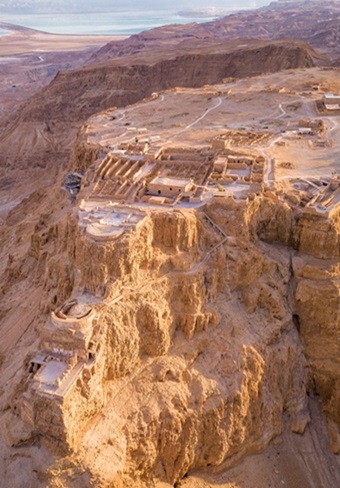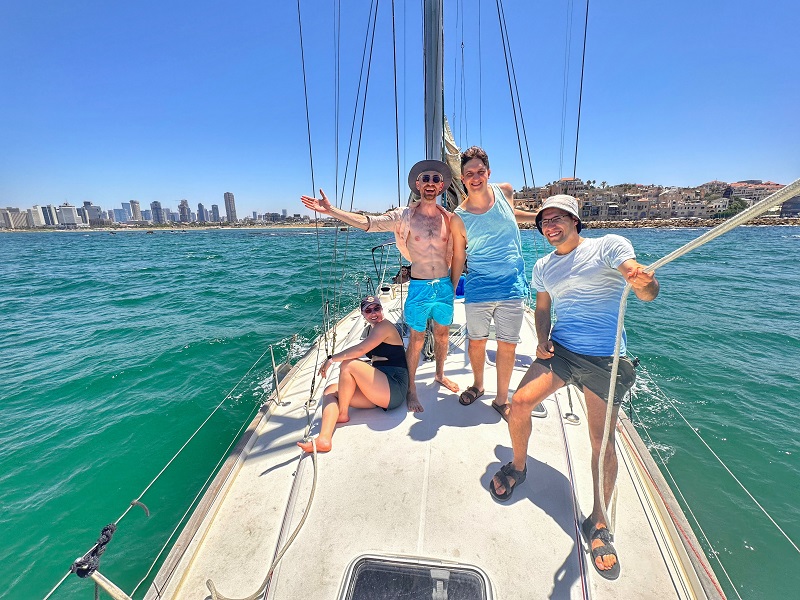Sarona
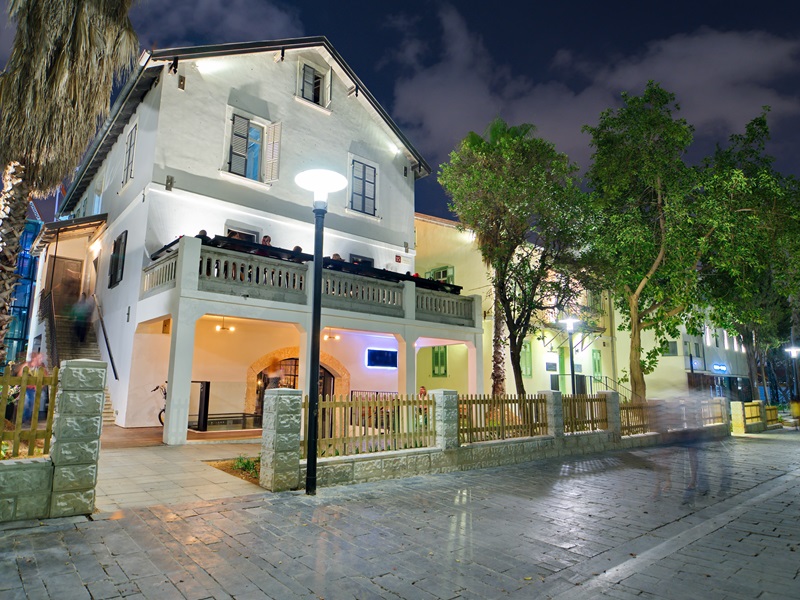
Sarona is one of the most successful conservation projects in Tel Aviv. A 19th-century colony founded by pietist Christians from southwestern Germany (the Templers) was painstakingly renovated into a famous commercial and recreational center, including a large-scale indoor food market (Sarona Market).
History of Sarona and Its Restoration Project
During the 19th century, in addition to the Jewish Zionist movement, two small Christian groups also desired to settle in the Holy Land. An American congregation, mostly from Maine, USA, settled in 1866 next to Jaffa (The American Colony). They believed the return of the Jews to the land would lead to Christ’s promised return. Sadly, upon their arrival, the group lost many members due to a plague, and within two years, they dispersed. Another Christian group from Germany, who called themselves Templers (not to be confused with the medieval Templar Knights), held a similar ideology. They established seven agricultural colonies across Palestine and were the first to introduce modern farming technology in the Holy Land. The first was in Haifa, and the third was Sarona, about 3 miles northeast of Jaffa. Retaining their German identity, they sympathised or even affiliated with the Nazi political party in the 1930s, and even ran Nazi parades in their colonies. So, in 1941, during World War II, the British deported all of the Templers to Germany and Australia. Later, the British used Sarona as a military camp, which was attacked several times by Jewish resistance groups. In the 1950s, the state of Israel appropriated all the Templer colonies. Sarona became an Israeli governmental and military space; the IDF uses some of it to this day. At the turn of the 21st century, a massive renovation project was launched to restore Sarona’s historical buildings and combine them with a new business center. Five buildings were moved, relocated for a new main road (Kaplan Street), and restored.
Touring Sarona
Completed in 2014, Sarona is now a part of the business center in the heart of Tel Aviv. Its 33 meticulously restored buildings now house modern boutique shops, cafes, and restaurants. Along its southern end is a new and first of its kind in Israel covered market – Sarona Market
Among its notable historical buildings –
Frank House (Aranya st. 9) – Mr. Johan Frank was the colony’s teacher. His role included preparing the Templers youth for confirmation—the elongated windows of his house hint at ecclesiastic architecture.
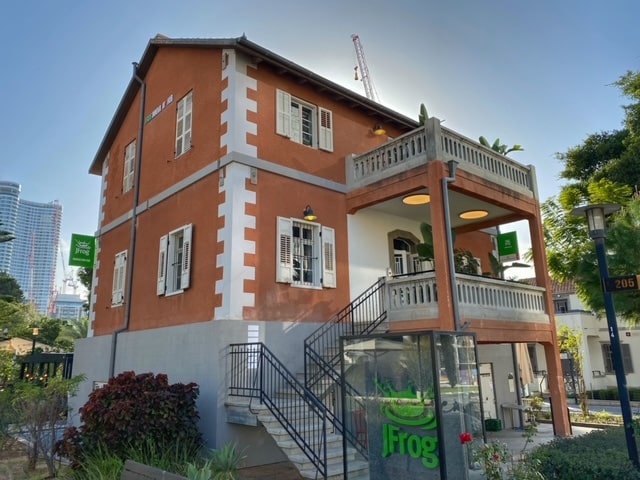 Steller House (Kaplan st. 22) – The Stellers owned a large orange grove and had a big dairy farm next door (Mandler 4, today’s Apple store). They were deported by the British in 1941. Later, their house was used by Israel as a government office. Relocated to its current position and conserved in 2005, its balcony, windows, doors, and even wall paintings were restored carefully. Today, a fashion store and an Irish-style bar operate in the building.
Steller House (Kaplan st. 22) – The Stellers owned a large orange grove and had a big dairy farm next door (Mandler 4, today’s Apple store). They were deported by the British in 1941. Later, their house was used by Israel as a government office. Relocated to its current position and conserved in 2005, its balcony, windows, doors, and even wall paintings were restored carefully. Today, a fashion store and an Irish-style bar operate in the building.
Grözinger House (Kaplan st. 30) – Mr. Grözinger operated a butchery and meat shop in his yard and was the first butcher in Palestine to use a cooling room. He was known for his meat and was especially popular for his bacon sausages. The family was deported by the British to Australia in 1941, and in the 1950s, the house was turned into an Israeli government office. In 2006, the house was moved 70 feet to its current location and restored. Today, a Glat-Kosher pizza restaurant operates in the building.
The Old Community House (Kaplan st. 34) – The Templers didn’t have a church, so the community house was for both secular and religious public assemblies. Completed in 1873, the building had a typical 19th-century southwestern German design. It included a fireplace with a chimney and a red brick rooftop designed for winter snow. A quote from Psalms 99:4 is engraved above the main entry in German and Arabic. Additional quotes from the Bible are inscribed on the pillars inside. After deporting the Templers, the British used this building as their camp headquarters. After 1948, the building was turned into an Israeli post office. The house was moved 100 feet to its current location during the renovation project. Its original clock tower and bells are now displayed in Sarona’s Visitor Center.
The New Community House (Kaplan st. 36) – In 1911, the first community house was turned into a school, creating a need for a new community house. The new building, made of locally produced bricks, is a single-story, comprehensive, functional structure. It was a popular wedding venue and also used as a ballroom. In the 1930s, a Nazi flag with a swastika fluttered above the building for almost a decade. After deporting the Templers, the British turned the community house into a military cinema. In the 1950s, Israel turned it into an army cafeteria and a synagogue. The building was moved in 2005 to its current location and restored.
Graze House (David Elazar st. 6) – The home of the colony’s blacksmith. Specializing in metal, Mr. Gottlöb Graze installed iron shutters in his windows and had a horse-shaped weathervane on his rooftop. Later, the building was used by Israel as the office of the military attorney general.
Lämmle Family House (David Elazar st. 9-11) – The two-story house was home to Friedrich Lämmle, one of the prominent members of the Sarona community. Besides being the colony’s landscape designer, he had orange and citrus groves, vineyards, a dairy farm, a stable, and a honey factory. On the second floor, Mr. Lämmle had a grand piano, with images of Wilhelm the 2nd and his wife, Augusta Victoria, hanging on the wall. Later, this house was used by Israel’s military intelligence. For many years, some of Israel’s most top-secret operations were plotted here. Today, fashion stores operate in the building.
Günthner House (David Elazar st. 18) – The Günthners operated a successful bakery and café. It was also popular among the the German Jews of Tel-Aviv (the Yekes), reminding them of the smells and flavors of Germany. The family also operated the printing house in the old winery. The Israeli IDF used the building from the 1950s up to 2005. Today, it is employed by the Technion.
The Olive Press (David Elazar st. 22) – Part of the Pfugfelder House, the Templars introduced Palestine’s first industrial olive press here. Conveyor belts transported the energy of a diesel engine to an innovative hydraulic system to crush and then press the olives, replacing the traditional mule-powered olive presses. Nicely restored, visitors can watch the banded wheels still spinning and watch a short video about the colony’s history.
Schmidt House (David Elazar st. 24) – Built-in 1872, the Schmidts were the only family in Sarona to have a radio receiver in its early years. Their house often hosted community gatherings, socializing, and hearing radio shows from Germany. The Shmidt House is the only house in Sarona that has not been altered in later years. After 1948, the Israeli IDF used the building, and its upper floor functioned as a synagogue.
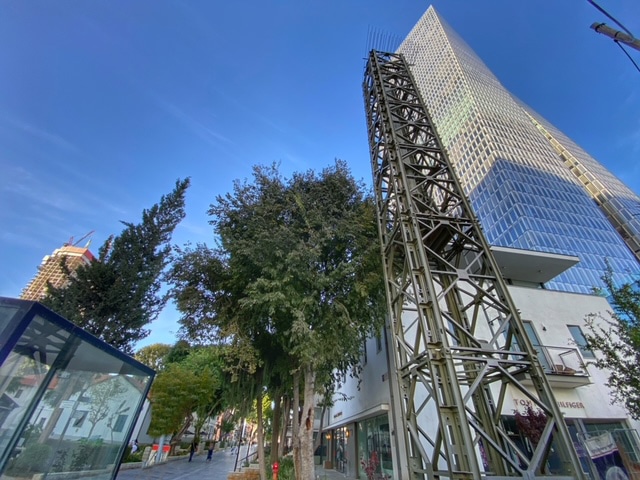 Tahal (David Elazar st. 19) – The white Bauhaus-style structure was added by the British in the 1940s, replacing a Templers period barn. In the 1950s, it was used by the Israeli secret service for a top-secret mission, operating mail pigeons. Flying from neighboring countries, the pigeons delivered encrypted messages attached to their legs. The metal tower next to the building had a similar purpose. Every night, an antenna raised above it would track encrypted electronic messages from Israel’s intelligence network.
Tahal (David Elazar st. 19) – The white Bauhaus-style structure was added by the British in the 1940s, replacing a Templers period barn. In the 1950s, it was used by the Israeli secret service for a top-secret mission, operating mail pigeons. Flying from neighboring countries, the pigeons delivered encrypted messages attached to their legs. The metal tower next to the building had a similar purpose. Every night, an antenna raised above it would track encrypted electronic messages from Israel’s intelligence network.
The Old Winery (David Elazar st. 30) – Founded in 1893, the German Templars began operating a winery here, mainly for export. With the growth of demand, a new winery was built next to it, and the old structure was used for bottling and packaging. Later, the building was employed as a printing house, a postal stamp print, a coin mint, and a government archive. Nowadays, after a beautiful restoration, the building houses chef Ran Shmueli’s fine-dining restaurant, Claro.
The New Winery (David Elazar st. 27) – Established in 1910, the grand new winery building could cope with Sarona’s wine-making influx. The ground floor was used for squeezing the grapes. The wine was kept in hundreds of wood barrels in cellars below for fermentation. Unfortunately, the new winery only operated for five years due to port closure when World War I broke out. In this cellar, in 1948, Israel secretly assembled used British Auster fighter planes purchased from the UK. Nowadays, part of the winery is appropriately used as a wine bar.
The Templer’s Tunnel: In 2008, while restoring the wineries’ buildings, a tunnel was uncovered between them. The tunnel enabled transportation of the barrels, on a small donkey-driven carriage, between the old and the new winery.
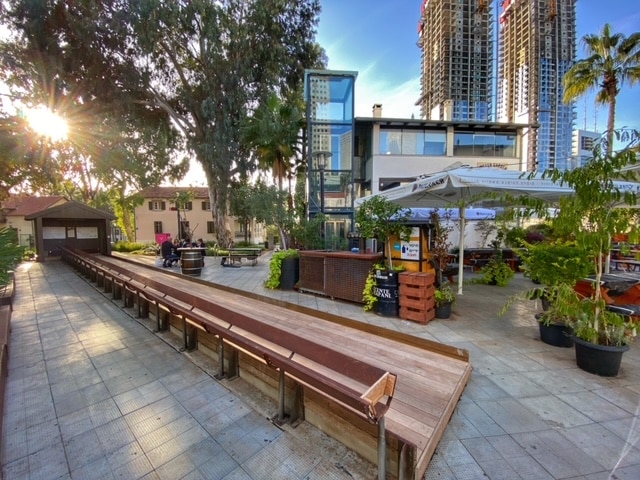 Kübler House (Mandler st. 3) – The Kübler House was built at the turn of the 20th century. On top of running a banana plantation, Mr. Kübler operated a bar and a German-style bowling alley (Kegelbahn) on the ground floor of his house.
Kübler House (Mandler st. 3) – The Kübler House was built at the turn of the 20th century. On top of running a banana plantation, Mr. Kübler operated a bar and a German-style bowling alley (Kegelbahn) on the ground floor of his house.
Later, he also built a tennis court in the back of the house. Today, a beer bar (Biergarten Paulaner) operates in the building, perfectly matching its historical legacy.
The Singing Benches of Sarona: Some of the wooden benches spread around the beer bar will automatically play songs by Israeli writer Haim Be’er when people sit on them.
“The Widows” House (Mandler st. 8) – This house was nicknamed after two of the Community’s widows who lived here. The house was remodeled in the 1930s in Bauhaus / International style, yet was later restored to its original look. In the 1950s, it was used by Israel’s ministry of agriculture. Today, an Israeli company (Opticana) has a store and an exhibition on Israeli optics.
Vennagel House (Mandler st. 9) – Mr. Johannes Vennagel was an architect and builder. His house, completed by 1872, combines local and rural German architectural elements. After 1948, the building was used by the IDF’s spokesman. Today, a chocolate-bar and a natural beauty shop (L’Occitane) operate in the building.
Vennagel’s Family Gold Treasure: Before the British deported the Vennagel family, Hugo Vennagel, Johannes’ grandson, concealed 23 gold coins in another family house in Sarona. In 2003, architect Dr. Danny Goldman managed to locate Hugo while researching the colony’s history. Hugo, 102 years old at the time of the interview, not only remembered the exact location of the treasure, but through skype directed Goldman’s team to the spot. The coins were returned to his children in a ceremony. See a video of the treasure discovered here.
Baldenhofer House / Sarona Visitor Center (Mandler st. 14) – The former house of the Baldenhauper, was later the Israeli PM’s library. Today, as a museum, it presents the unique history of Sarona since its establishment, some 140 years ago.
Venus House (Mandler st. 10) – Built in 1886, Mr. Venus operated a woodshop which was in high demand (“Venus Furniture”). After 1948, the house and carpentry were used by Israel’s Military Police, and the IDF spokesman. Today, a design shop (Soho), operates in the former carpentry’s building.
Sarona Market – One of the most popular attractions in Sarona is the indoor food market, the only one of its type in Israel. 90 different stores, street-food stands, restaurants and cafes offer a wide range of dishes and fresh local produce. See a video of the Sarona Market here.
“Ein Deutscher kann Württemberg verlassen, jedoch Württemberg wird niemals einen Deutschen verlassen (You Can take a German out of Württemberg, but you can’t get Württemberg out of the German)”. team member, Fredi Wiesner.

